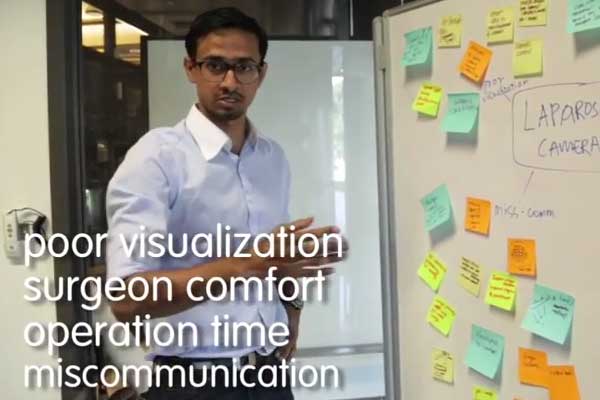Getting Started
During initial concept selection, the goal is to narrow down many concepts into a manageable set for research, evaluation and, eventually, final concept selection. A more formalized approach will be introduced in 4.6 Final Concept Selection for the purpose of selecting the final concept after additional information has been gathered on the most promising solution ideas, including their IP, reimbursement, regulatory, and technical profiles. For initial concept screening, the following steps can serve as a guide.
Review and Document Raw Data
What to Cover
Review all output from the team’s ideation sessions. Make sure that concrete solution concepts have been identified rather than general approaches (otherwise, innovators should return to ideation). Associate ideas with the individual(s) who generated them and seek clarification, as needed. Assign a name or label. Summarize the results.
Where to Look
Refer directly to the output from the brainstorming session as described in 3.1 Ideation.
Cluster Ideas
What to Cover
The next step is to organize similar ideas into clusters. Assess the data to identify the most meaningful organizing principle for the groupings (e.g., anatomical location, mechanism of action, engineering area, feasibility, influencer appeal, decision maker value). Experiment with different approaches, as needed. Consider using multiple organizing principles at different levels.
Where to Look
Different ways of clustering ideas can be learned by reviewing other concept maps. Examples can be found by searching the Internet for sample concept maps.
Develop a Concept Map
What to Cover
Visually document the clusters in the form of a concept map. Start with the need in the center and then place the groupings, subgroupings, and ideas. Again, experiment with different approaches, if necessary.
Where to Look
Software can facilitate the concept mapping process. Available software packages (e.g., Mindjet MindManager and IHMC Cmap Tools) can be found on the Internet.
Assess the Concept Map
What to Cover
Take a broad view of the concept map to determine if there are: (1) obvious gaps based on the organizing principle(s), (2) biases in the solution set in terms of the recurrence of specific approaches or ideas, (3) any remaining approaches or mostly specific solutions represented among the ideas, and/or (4) commonalities or complementarities between concepts such that they can be combined into new and unique ideas. Perform this analysis for all the concept maps that have been created, using different approaches to see if any themes emerge.
Where to Look
Revisit the output from chapters 2.1, 2.2, 2.3, and 2.4 to validate the range of possible solutions for a given need and identify gaps and biases. For example, if the primary organizing principle chosen for a concept map is focused on anatomy, reviewing one’s disease state analysis could highlight whether all relevant anatomical areas are represented on the concept map. Involving outside assistance [perhaps one or more people to compare concepts against the need specification (see below)] can also help in identifying biases or gaps, since their fresh perspectives may more readily detect missed opportunities and prejudices influencing the defined concepts.
Compare Concepts Against the Need
What to Cover
To prepare for a concept selection meeting, identify the participants, decide on a facilitator, define the process to be used in the session, and distribute pre-reading (the need specification and concept map should be shared with participants in advance). If an initial concept selection meeting is impractical (or if expert feedback is desired as an input to the meeting), schedule one-on-one meetings with targeted contacts to share the solutions and collect their thoughts. In either type of meeting, evaluate each solution idea against the need statement and must-have need criteria to eliminate those that do not. And then assess the remaining concepts against the nice-to-have criteria until only a small subset of the most promising solutions has been identified. These solutions will be the ones that go forward into the concept screening stage of the biodesign innovation process, ultimately leading to final concept selection. If too few solutions meet the criteria, additional ideation may be needed. Assuming that the solutions represent true concepts and not approaches, if too many solutions satisfy the need criteria, the need specification and need criteria may need to be revisited (2.5 Needs Selection).
Where to Look
Innovators should leverage their personal networks to identify appropriate participants for the solution screening process.



